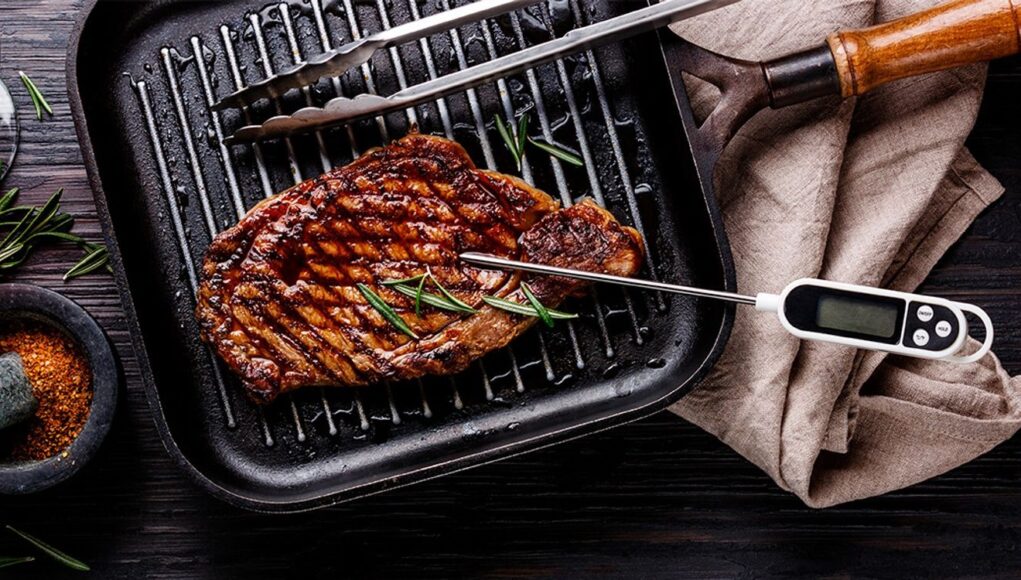Cooking ribs to perfection is no small feat. For many, the most challenging part isn’t just seasoning or grilling but knowing when they are perfectly cooked. Using a meat thermometer is the key to ensuring your ribs are juicy, tender, and safe to eat. The question remains: Where to Put Meat Thermometer in Ribs? Let’s dive deep into the intricacies of using a meat thermometer for ribs.

The Importance of Using a Meat Thermometer
Before we answer where to put the thermometer, it’s crucial to understand why using a meat thermometer is essential. Many assume visual inspection or cooking time ensures the meat is done. However, the only surefire way is by checking the meat’s internal temperature.

Understanding Meat Thermometers
Types of Meat Thermometers
There are different types of meat thermometers, each serving its purpose. Here are the most common ones:
- Digital Instant-Read Thermometers
- Dial Oven-Safe Thermometers
- Wireless Meat Thermometers
For ribs, a digital instant-read thermometer is often recommended due to its precision and quick readings.
Accuracy of Reading
Accuracy in readings is crucial, especially when cooking bone-in meats like ribs. Always calibrate your thermometer according to the manufacturer’s instructions.

Step-by-Step Guide on Where to Put Meat Thermometer in Ribs
Step 1: Preparing the Ribs
Before inserting the thermometer, ensure your ribs are adequately prepared. This includes seasoning and pre-cooking preparations.
Step 2: Identifying the Optimal Insertion Point
The most critical part of using a meat thermometer in ribs is choosing the right spot. Heres how:
- Avoid Fat and Bone: Insert the thermometer in the thickest part of the meat, away from fat and bone. Bones can give an inaccurate reading as they conduct heat differently.
- Midway between the Ribs: For back ribs, insert the probe midway between the ribs for the best measurement.
Step 3: Checking the Temperature
Once inserted, check the reading. The ideal internal temperature for ribs is 145F (62.8C) for safety. For tender, fall-off-the-bone ribs, aim for an internal temperature of 190-203F (88-95C).
Frequent Mistakes to Avoid
Common errors can hinder effective temperature readings:
- Inserting the thermometer too shallow
- Taking measurements too close to bone
- Not allowing enough time for an accurate reading
Additional Tips for Perfect Ribs
Rest Your Meat
Always rest your ribs for about 10-15 minutes after cooking. This allows the juices to redistribute, making the meat even more flavorful.
Cross-Check with Multiple Readings
For utmost accuracy, take multiple readings from different parts of the ribs.
Utilize Technology
Consider using Wi-Fi or Bluetooth Meat Thermometers. These can offer real-time monitoring through your smartphone, ensuring perfect results each time.
Expert Opinions
Many chefs and cooking experts emphasize the importance of using a meat thermometer. Its not just about achieving the right flavor but ensuring the meat is safe to eat. According to a renowned chef from [source], Using a meat thermometer is the gold standard in professional kitchens for ensuring perfectly cooked meat.
FAQ Section
Why is it crucial to avoid bones and fat when measuring?
Bones and fat conduct heat differently than meat tissue, leading to inaccurate readings.
Can I use a dial thermometer for ribs?
Yes, but a digital instant-read thermometer is recommended for more accurate and quicker readings.
What’s the ideal temperature for fall-off-the-bone ribs?
For tender ribs, aim for an internal temperature of 190-203F (88-95C).
For further information on using a meat thermometer, visit this guide.
For more tips on cooking and grilling, check out our other articles on microwave timing, rotisserie pairings, and griddle recipes.
As an Amazon Associate, I earn from qualifying purchases.
As an Amazon Associate, I earn from qualifying purchases.







